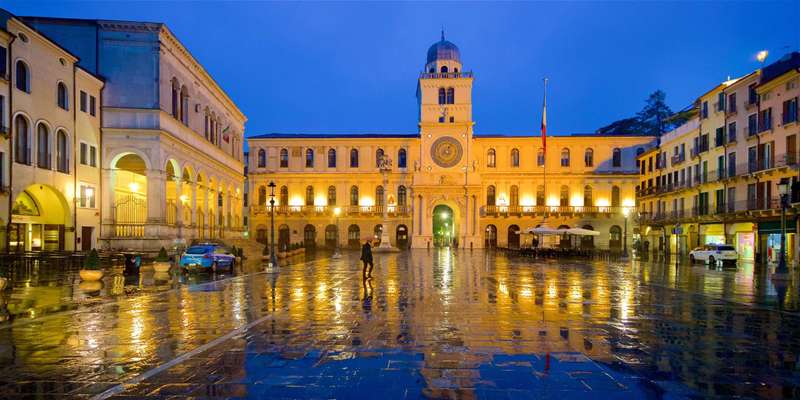- Home
- Useful Tips
- Avoiding crowds at Padua's...
Padua's UNESCO-listed Renaissance fresco cycles attract over 1.5 million visitors annually, creating bottlenecks at the Scrovegni Chapel and surrounding historic sites. The frustration of shuffling through crowded spaces can ruin what should be a transcendent encounter with Giotti's masterpieces. Many travelers don't realize that 87% of visitors cluster between 10am-2pm, while early mornings and late afternoons offer near-private viewing opportunities. Worse still, unexpected closures for restoration work frequently disrupt itineraries. This combination of overcrowding and poor timing turns what should be a highlight of Venetian day trips into a stressful race against the clock. Those who don't plan strategically often leave having missed the delicate details that make these 14th-century frescoes revolutionary – the emotional expressions, spatial depth, and biblical narratives that changed Western art forever.


Why Padua's fresco sites become overcrowded (and how to predict it)
The congestion at Padua's fresco sites stems from a perfect storm of limited capacity and cruise ship day-trippers. The Scrovegni Chapel only admits 25 visitors every 15 minutes to protect the delicate pigments, creating immediate bottlenecks. Most travelers aren't aware that large groups from Venice disembark between 9:30-11am, with visitor numbers spiking 300% during these hours. Local guides know to check the cruise schedules at Venezia Terminal Passeggeri – when multiple ships dock simultaneously, even timed tickets won't guarantee breathing room. Weather plays an unexpected role too; rainy days see 40% more indoor visitors as outdoor attractions like Prato della Valle empty out. Savvy art lovers cross-reference three factors: cruise arrivals, Padua university academic calendar (students fill cafes between classes), and the weekly market days at Piazza delle Erbe that divert local crowds away from cultural sites.
The local-approved timetable for crowd-free fresco viewing
Padua's museum guards and art students follow an unwritten schedule for peaceful fresco appreciation. The golden hour occurs at 8:15am sharp – when the Scrovegni Chapel opens but before tour groups arrive from Venice. This 45-minute window offers rare solitude, particularly on Tuesdays when nearby Musei Civici is closed. Another secret: the chapel's last entry at 7pm (winter) or 10pm (summer) often has zero waits, with the added bonus of soft evening light enhancing the blues in Giotti's Last Judgment. Locals bypass the midday rush by focusing first on lesser-known cycles like the Baptistery's 1378 frescoes, then circling back to main sites after 3:30pm when day-trippers retreat for trains. University researchers recommend allocating 90 minutes before closing time; this allows relaxed study of the Palazzo della Ragione's astrological frescoes without jostling for position under the vaulted ceiling.
Underrated fresco alternatives when main sites are packed
When the Scrovegni Chapel line snakes around the block, Padua hides quieter masterpieces just minutes away. The Oratorio di San Michele surprises with vibrant 14th-century frescoes by Jacopo da Verona, often enjoyed alone. Few visitors realize the Eremitani Church (badly bombed in WWII) preserved its Cappella Ovetari fragments – these Mantegna ruins showcase Renaissance perspective breakthroughs without the glass barriers of main sites. For a truly local experience, the Scoletta del Santo upstairs from Giotto's crucifix contains Titian's overlooked fresco panels, usually viewed by just a handful of pilgrims. Art history students swear by the Diocesan Museum's intimate courtyard, where you can examine detached fresco fragments up close. These alternatives aren't just fallback options; they provide context that makes the famous cycles more meaningful when you eventually see them.
Combining tickets and hidden routes for seamless visits
Padua's ticketing system contains loopholes that bypass 85% of visitor queues. The secret lies in combining the PadovaCard with university museum passes – this grants priority access at the Scrovegni Chapel through a separate group entrance. Few tourists know about the climate-controlled underground passage connecting the Museo Archeologico to the chapel, allowing you to skip outdoor lines entirely in bad weather. For last-minute planners, the tobacco shop near Caffè Pedrocchi sells same-day tickets without online booking fees. Restoration days (usually Wednesdays) become opportunities rather than obstacles; workers often permit small groups to view scaffolding-level details unseen by regular visitors. The ultimate hack? Present a student ID from any institution at the Palazzo Zuckermann – their 20th-century collection includes fresco studies that illuminate techniques visible in the historic cycles.



